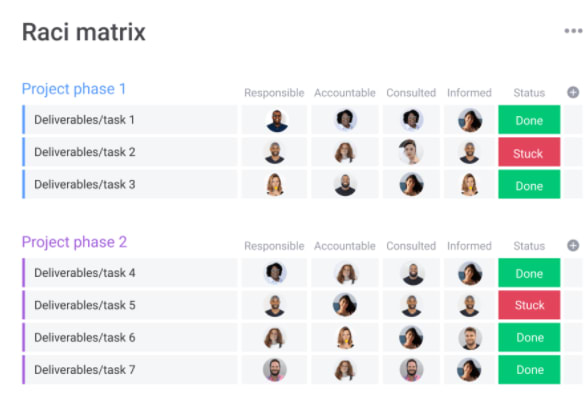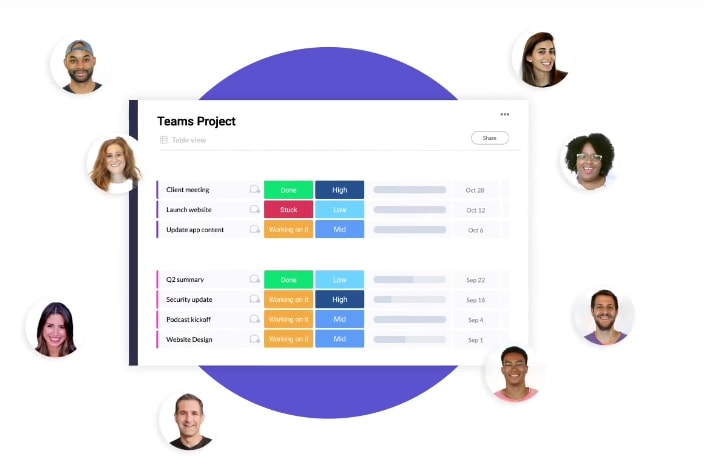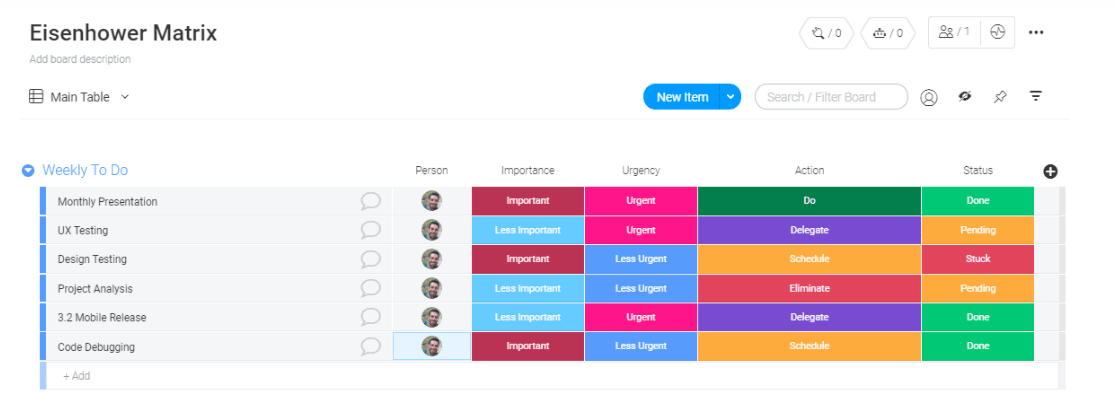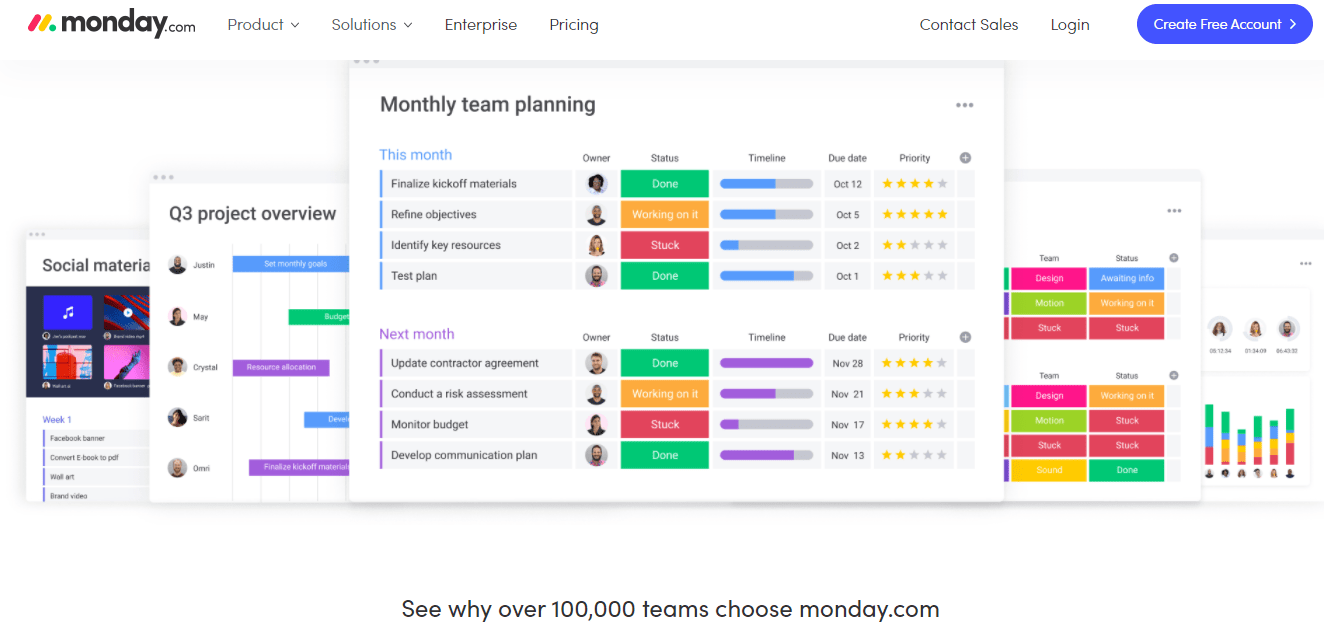In today’s world, involving stakeholders in your projects is no longer an option, but a social responsibility — especially in the early stages.
But if you’re reading this guide, chances are you already know that.
Now, the million-dollar question is: how do you actually design a successful strategy that keeps stakeholders engaged along the process?
Today we’ll answer that question.
We’ll also provide examples along the way to contextualize concepts. And to make your life even easier, we’ll give you some templates to speed-up execution.
Excited?
Let’s get into it.
What’s stakeholders engagement?
To make sure we’re all on the same page, we need to start by defining what a stakeholder is.
In essence, a stakeholder is anyone who is, in some way, interested or concerned about your project, including clients, managers, suppliers, users, and even citizens, depending on the project (e.g., large urbanization projects might affect entire cities).
We can categorize stakeholders into 2 main branches:
- External stakeholders: those who form part of your organization or have a direct interest in your project.
- Internal stakeholders: those who might or might not be interested in your project, but are indirectly affected by it.
So now that we’re in sync, what’s stakeholders engagement?
Stakeholders engagement is the conscious process of deliberately involving stakeholders during all the stages of the project life cycle, aiming to align goals with their expectations.
You see, this is vital.
For instance, if you’re designing a new product but never listen to what potential users are looking for, you’ll probably build something nobody wants.
Or if you don’t consider how your project will affect citizens in surrounding areas, you might get into a legal dispute later on.
Said simpler, stakeholders’ opinions matter, and you must listen to them. Otherwise, you’re risking the project.
Why do you need a strategy?
Keeping stakeholders engaged might seem simple at first glance, but the process comes with potential pitfalls.
To avoid such roadblocks, you must think strategically.
The first questions you’re faced with are: what’s the level of engagement of stakeholders? Do they even know you’re into something? If so, are they supportive or reluctant?
Remember that not all stakeholders are created equal.
Depending on their engagement level, you might take a different engagement approach.
For instance, take a look at the 5 different levels of stakeholders engagement:
- Unaware: stakeholders who aren’t even conscious of your project’s existence.
- Resistant: people who are aware of your project, but might feel hesitant to change.
- Neutral: stakeholders who are aware of your project, but don’t fully understand it or like it.
- Supportive: stakeholders who like and support your project (and potential impact).
- Leading: anyone who takes a participative role in your project’s success (e.g., project leaders, clients, C-level execs, etc.).
If you don’t understand these levels and develop an appropriate strategy for each, all your communication will be a mess and, thus, you won’t get good results.
For instance, if you try to bring in unaware stakeholders mid-execution, they’ll probably feel upset. Or if you don’t have a plan to communicate project value to resistant stakeholders, you’ll miss huge opportunities.
With this in mind, the question is: how do you design a strategy that keeps stakeholders engaged and helps you communicate effectively?
Let’s discuss a simple process.
5 steps to develop a solid stakeholders engagement plan
At this point, you already understand the cruciality of stakeholders and why you need a strategy to keep them engaged.
The 5-step approach outlined below is a great way to start on solid ground.
Let’s break it down.
1. Identify stakeholders
This is kind of an obvious, yet crucial step.
Before you even start with your communications strategy, you must analyze who your stakeholders are and make a list of all of them.
Our stakeholder register template can be helpful at this stage.

As the name suggests, this template helps you register all your stakeholders and organize your list based on interest and power (more on this later), as well as the 5 levels of engagement we discussed previously.
This will make it easier for you to keep a close eye on stakeholders and monitor the performance of your strategy.
2. Prioritize stakeholders
Even though you should consider all your stakeholders in the process, some of them will be more relevant for your decision-making.
These stakeholders are called “key stakeholders.”
In short, you should channel most of your focus and energy onto this key category. To do it, you must develop a solid prioritization system.
Here’s where the Interest/Power grid comes in.
This grid helps you categorize stakeholders based on their influence and interest and gives you communication criteria for each category.
Like this:
- Low interest, low power: allocate minimal effort.
- High interest, low power: keep them informed.
- Low interest, high power: keep them satisfied.
- High interest, high power: keep them close and engaged.

As shown in the previous step, our stakeholders engagement template will help you implement this grid and categorize your list based on power and interest.
You can also use our RACI matrix template to define responsibilities and consider how a stakeholder’s involvement may change along the way.

3. Build a communications plan
Once you’ve a prioritized list of stakeholders, you need to design a communications plan to keep them engaged.
And make no mistake, 6 out of 10 teams say that poor communication is their biggest obstacle to success, so this step is crucial.
To avoid this trap, the first thing you should pay attention to is “concreteness.”
More specifically, you must clearly define:
- Type: what format or channel will you use to communicate with stakeholders? (e.g., phone, in-person meetings, video, email, etc.)
- Frequency: how often will you communicate? (e.g., weekly, monthly, quarterly, etc.)
- Content: what will you communicate? (e.g., project status reports, expenses, workload, profitability, etc.)
Then, you must get rid of multiple sources of truth and consolidate all your communication into a single platform. This will help you avoid potential misunderstandings and reduce friction.
For instance, with monday.com, you can create a dashboard to monitor progress and invite relevant stakeholders to communicate and collaborate under one roof.

This will ensure everyone’s on the same page while increasing productivity, as you remove the need to keep them informed individually.
4. Incorporate feedback into your strategic plan
Now that you’ve defined key stakeholders and set solid communication channels, it’s time to actually implement feedback.
First, you must decide the implementation approach you’ll take:
The most common include:
- Active: stakeholders have a large decision-power, and you implement their input directly to achieve your goals.
- Passive: key stakeholders take a consultative role in your decision-making, and you use their opinion to support your efforts.
This process includes setting both short-term and long-term initiatives and channeling all your efforts towards a few specific and targeted priority goals.
A typical priority matrix can be helpful to structure and organize these initiatives.
You can also try out our Eisenhower Matrix template.

This template helps you prioritize engagement activities based on importance and urgency, which can be helpful to spot where you need to focus on.
5. Monitor and report
Over the last few years, project status report has become the main activity for most PMOs (Project Management Offices).
And within reason.
To keep stakeholders engaged, you must inform them — show them you actually implement their input. That’s why monitoring progress and reporting back to stakeholders is crucial for any project team.
For example, with monday.com, you get access to multiple data visualizations and automations that make the process much easier.
Instead of manually collating status reports, like roughly 33% of teams do, our reporting features will help you automate most of the process.

Simply set up automations to notify stakeholders based on conditional data, and every time you meet a goal, finish a task, or change the status of a project, they’ll get a notification automatically.
How to skyrocket stakeholders engagement with monday.com
Keeping stakeholders engaged isn’t simple — there’s too many variables to handle at once and, without a system, this practice can quickly turn into a true nightmare.
The good news?
The right Work OS can make the process way easier.
Here’s where monday.com comes in.
So before we finish this guide, why don’t we quickly cover what we offer and how monday.com can help you?
Let’s start with the basics.
What’s monday.com?

In short, monday.com is a complete Work OS that’s flexible, customizable, and powerful at the same time.
From the start, you get access to:
- 20+ dashboard widgets
- 30+ drag-and-drop column types
- 40+ seamless integrations
- 200+ customizable templates
- 8 data visualizations
- 250,000+ potential automations
What does this mean for you?
With monday.com, you’ve millions of potential combinations available to design and build a platform that looks and feels yours.With our platform, you aren’t limited to a specific way of working. Instead, you’re free to play with hundreds of building blocks to streamline your workflows and see your data the way you want to.
That’s one of the reasons more than 100,000 organizations use monday.com to manage their projects and achieve great things.
The bottom line?
If you’re looking for a system that keeps you and your stakeholders informed and organized, then monday.com is probably a good fit.
Here’s a quick overview of everything you can do with our platform:
Ready to ramp up your stakeholders engagement strategy?
Keeping stakeholders engaged with your projects will help you deliver better results and get your milestones aligned with their expectations. By following the process outlined in this guide, you’ll design a solid strategy to actually do it.
Besides, using a true Work Os, like monday.com, can make the job much easier.
To see for yourself, why don’t you start by using our fully customizable stakeholder register template?
It’s a great way to build your strategy on solid ground.


